
Your Questions Answered
We often get questions on various topics related to products we sell, services we offer or just general questions related to our business. With our depth of knowledge and expertise, we have created this page as a resource for our customers to learn and benefit from our years of experience.
We would still like to talk to you though! If you can’t find an answer to your questions here, please reach out to us via phone at: 01733 555838 or email at sales@bentleynursing.com
Home Assessments
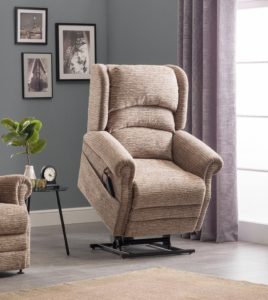 Yes, is the answer to this question – we have members of staff who are highly qualified to do home visits. They will demonstrate our products or carry out site surveys all in the comfort of your own home. It really helps you to see our products in your own environment rather than just trying to visualise what it will be like.
Yes, is the answer to this question – we have members of staff who are highly qualified to do home visits. They will demonstrate our products or carry out site surveys all in the comfort of your own home. It really helps you to see our products in your own environment rather than just trying to visualise what it will be like.
For all home visits, we put safety-first – all necessary PPE will be worn, including face masks, gloves, hand sanitiser, and wipes.
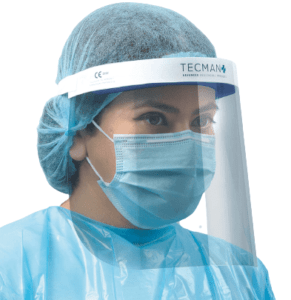 The simple answer to this question is YES. We have highly qualified home assessors who can demonstrate our products or carry out site surveys in the comfort of your own home.
The simple answer to this question is YES. We have highly qualified home assessors who can demonstrate our products or carry out site surveys in the comfort of your own home.
We will take all the necessary precautions and our staff member will be wearing an approved mask and gloves and will bring sanitizers and cleaners with them too.
Get in touch with one of our experts who know all our products in depth and will be pleased to help you make the best choice.
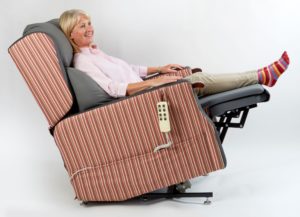 Yes, is the answer to this question – we have members of staff who are highly qualified to do home visits. They will demonstrate our products or carry out site surveys all in the comfort of your own home. It really helps you to see our products in your own environment rather than just trying to visualise what it will be like.
Yes, is the answer to this question – we have members of staff who are highly qualified to do home visits. They will demonstrate our products or carry out site surveys all in the comfort of your own home. It really helps you to see our products in your own environment rather than just trying to visualise what it will be like.
For all home visits, we put safety-first – all necessary PPE will be worn, including face masks, gloves, hand sanitiser, and wipes.
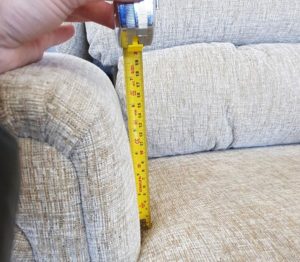 There is NO charge for a home assessment. We offer free professional home assessments to measure up and specify the correct product for your needs. We help you find the perfect solution.
There is NO charge for a home assessment. We offer free professional home assessments to measure up and specify the correct product for your needs. We help you find the perfect solution.
Mobility Scooters
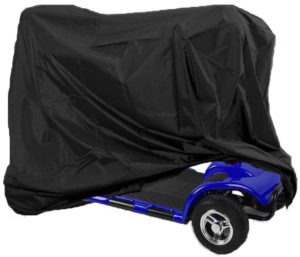 Scooter storage covers are very good for keeping the rain off your scooter if you need to leave it outside. The basic covers usually have elasticated cord at the bottom edges making it easy to fit and ensures the cover remains secure. These covers will fit most scooters.
Scooter storage covers are very good for keeping the rain off your scooter if you need to leave it outside. The basic covers usually have elasticated cord at the bottom edges making it easy to fit and ensures the cover remains secure. These covers will fit most scooters.
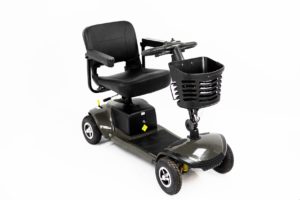 Unfortunately, not all mobility scooters have a basket on the front – the good news is that there are plenty that do!
Unfortunately, not all mobility scooters have a basket on the front – the good news is that there are plenty that do!
However, some people find that the basket on the front of a scooter is not always sufficient to carry all they need. You can also add a removable rear basket to your scooter for extra storage – these are on our website. We also offer a range of bags that you can attach to the back of the seat.
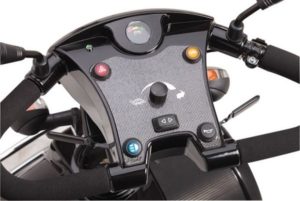 The speed of mobility scooters ranges from 4 mph up to 8 mph. A pavement scooter will have a speed of 4 mph and the larger road scooters tend to have a top speed of 8 mph with the ability to limit this to 4 mph when riding on the pavement.
The speed of mobility scooters ranges from 4 mph up to 8 mph. A pavement scooter will have a speed of 4 mph and the larger road scooters tend to have a top speed of 8 mph with the ability to limit this to 4 mph when riding on the pavement.
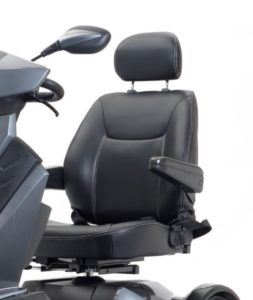 This is an important question as it is key that you are seated comfortably and with a correct posture. The basic seat will comprise of a padded base and back rest, and will usually have width adjustable armrests. Seat features, designs and comfort levels vary greatly between models. The larger models tend to have a Captain’s Seat – this will be bigger and have more adjustment, it will also have a head rest.
This is an important question as it is key that you are seated comfortably and with a correct posture. The basic seat will comprise of a padded base and back rest, and will usually have width adjustable armrests. Seat features, designs and comfort levels vary greatly between models. The larger models tend to have a Captain’s Seat – this will be bigger and have more adjustment, it will also have a head rest.
Most seats will have the following adjustments – seat height, seat position and the seat back angle. The seats usually swivel through 90, 180 or 360 degrees to allow you to get on and off the scooter easily. The arms rest normally lift up as well to allow a sideways transfer if needed.
The answer is YES – all scooters are operated using a key ignition. Without the key, it is impossible to drive the scooter. All scooter keys are generally supplied in pairs just in case you should lose one. Replacement keys can be requested and ordered from ourselves.
For safety reasons, however, we do recommend you secure the scooter with a lock if you leave it unattended as it is possible to disengage the parking brake easily.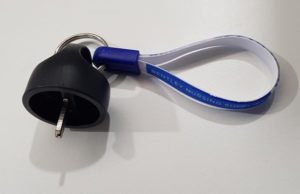
 The controls on most scooters are very simple and easy to use. They are usually driven using a finger or thumb control on the handlebars. The lever is generally called a ‘wig-wag’.
The controls on most scooters are very simple and easy to use. They are usually driven using a finger or thumb control on the handlebars. The lever is generally called a ‘wig-wag’.
The majority of ‘wig-wags’ are operated with your thumb. However, on some of the larger scooters with a greater range, the wig-wags are designed to be pulled back with your fingers.
It is standard to have the forward control panel on the right-hand side and the reverse control panel on the left. This can usually be reversed if you are left-handed or have restricted use of either hand, however, either side can be used for both forwards and backwards if that is how you prefer to operate the scooter.
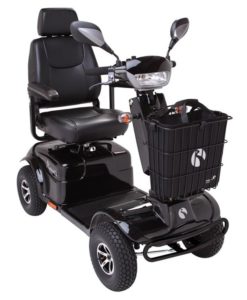 There are a number of specific features that a scooter must have to be classified as road legal. It must have working headlights, rear lights and indicators, a horn, a rear-view mirror and emergency hand brakes. Road legal scooters can travel up to 8mph but must have a way to limit the speed to 4mph when travelling on the pavement. This is normally done by a switch on the tiller where all the other controls are found.
There are a number of specific features that a scooter must have to be classified as road legal. It must have working headlights, rear lights and indicators, a horn, a rear-view mirror and emergency hand brakes. Road legal scooters can travel up to 8mph but must have a way to limit the speed to 4mph when travelling on the pavement. This is normally done by a switch on the tiller where all the other controls are found.
A Class 3 mobility scooter is normally a larger scooter and will be capable of travelling at 8mph.
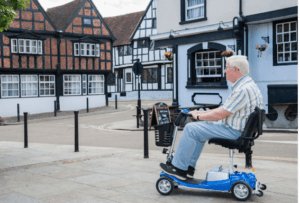 A pavement scooter is a Class 2 machine that can be used on all pavements and footpaths which has a top speed of 4mph. You can use pedestrian and zebra crossings to get across the road. You are not permitted to ride your scooter along the road, except where there is no pavement.
A pavement scooter is a Class 2 machine that can be used on all pavements and footpaths which has a top speed of 4mph. You can use pedestrian and zebra crossings to get across the road. You are not permitted to ride your scooter along the road, except where there is no pavement.
Pavement scooters are usually slightly smaller than road scooters and are often considered ‘portable’ due to their ability to be dismantled with ease for transportation.
 Good news – the answer is NO. The road-legal mobility scooters are not legally designed as motor vehicles and are therefore not subject to road tax and they are not required to have an MOT, although we strongly recommend, they have regular service.
Good news – the answer is NO. The road-legal mobility scooters are not legally designed as motor vehicles and are therefore not subject to road tax and they are not required to have an MOT, although we strongly recommend, they have regular service.
It is advisable to register the 8mph road-going mobility scooters which are known as Class 3 mobility scooters with DVLA as this gives complete peace of mind. Generally speaking, a Class 3 mobility scooter are larger outdoor machines. When you register with DVLA you will be given a registration number in the same way as registering a car, however, unlike a car, there is currently no legal requirement to display the number plate.
 Most manufacturers recommend that you have your scooter serviced annually. It is important to keep it in working order. An annual service is often a requirement for insurance cover.
Most manufacturers recommend that you have your scooter serviced annually. It is important to keep it in working order. An annual service is often a requirement for insurance cover.
We liken it to a car service. If your car is looked after and serviced regularly it normally will last longer and that is the same for your mobility scooter. Take good care of it and it will take care of you!
A service would cost between £85 and £100 depending on the size of the scooter. We also offer a collect and return service for your scooter from your home if required to make it easier for you.
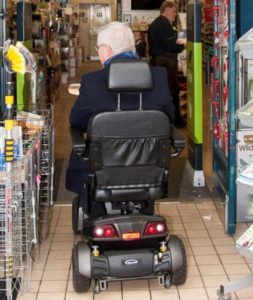 You are not legally required to have insurance for your mobility scooter but it is highly recommended. There is a number of risks that the insurance will cover and these include: –
You are not legally required to have insurance for your mobility scooter but it is highly recommended. There is a number of risks that the insurance will cover and these include: –
- Third-party liability (bumping into a parked car or driving over someone’s foot)
- Accidental damage to the scooter
- Theft of the scooter
A small accident could result in a potential cost amounting to many thousands of pounds. Being covered for third party liability is by far the most important.
We offer a range of insurance policies – contact us for more information on policies available.
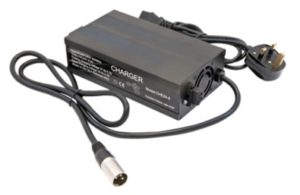 All scooters are sold with a charger. You should plug the charger into the scooter charging point before plugging it into the mains. This is normally found on the tiller of the scooter which is the main handle-bars of the scooter. The charging point is normally at the top of this.
All scooters are sold with a charger. You should plug the charger into the scooter charging point before plugging it into the mains. This is normally found on the tiller of the scooter which is the main handle-bars of the scooter. The charging point is normally at the top of this.
Some of our scooters have removable battery boxes which have the added bonus of having a charging point directly into the batteries. This is ideal for those that have to take the scooter inside to charge it as it means you don’t have to anymore. All you need to do is remove the battery box and take this to the socket of your choice and plug it in. When the battery is full the automatic cut-off will shut off the charge. The manufacturer’s manual will show you how to use the charger. This option is mostly on the smaller pavement scooters.
Chargers are replaceable.
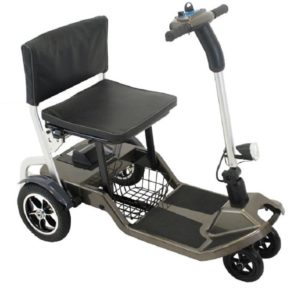 In order for a mobility scooter to be foldable and easy to transport, it must be lightweight. With the lighter units, they are generally smaller in the frame and easier to carry. Many fold-up scooters can weigh as little as 16 kgs and as much as 30kgs.
In order for a mobility scooter to be foldable and easy to transport, it must be lightweight. With the lighter units, they are generally smaller in the frame and easier to carry. Many fold-up scooters can weigh as little as 16 kgs and as much as 30kgs.
The Qfold (pictured) chassis is made from ultra-lightweight aircraft-grade aluminium and is designed for lifting in and out of the car boot with ease. Its total weight with the battery is 18.95 kg. It also benefits from an exceptionally lightweight lithium battery that is both accessible and simple to remove.
The Globe Trotter is extremely lightweight at only 26kg making it ideal for transporting. It folds down to a compact size for a simple storage solution.
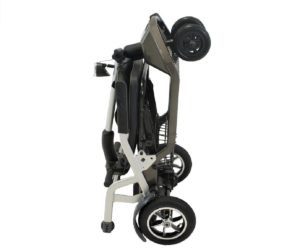 Ideally, a car transportable scooter should be quick and easy to fold or dismantle allowing you to get it into your vehicle with ease.
Ideally, a car transportable scooter should be quick and easy to fold or dismantle allowing you to get it into your vehicle with ease.
The Qfold mobility scooter is a great example of this. It is a revolutionary lightweight but strong and stable folding scooter that can be folded in seconds for ease of transportation and storage.
This allows you to transport your scooter whatever size of vehicle you drive. Car transportable scooters are designed to enable you to take your mobility scooter out with you in your car so that you can maintain your independence. With a range of different Mobility boot scooters available it’s always worth taking a look at the options as they come in different configurations. Some can have larger batteries fitted to give an increased mileage where required, some are now available in aircraft-grade aluminium which reduces the weight down significantly to make the lifting of the mobility scooter much easier.
To ensure the correct car transportable scooter is selected it is always recommended that the different options are looked at and tried in your vehicle to guarantee you can make an informed decision which one will be best for you.
Are you looking for a mobility scooter that you can take apart so that you can transport it easily? Do you need your mobility scooter to fit into the boot of your car?
A boot scooter should be easy to take apart, should fold or dismantle simply, and should be light enough for you to load it into the boot of your car.
The Liberty Vogue scooter is a great example. It is a lightweight car transportable mobility scooter and can be disassembled into five parts in just 30 seconds.
The Globe Trotter is an advanced lightweight automatic electric folding mobility scooter. It is fast and easy to fold at the press of a button. It has been designed and manufactured for the busy traveller, folding down to a compact size for a simple storage solution – certainly a good boot scooter. Boot scooters are designed to enable you to take your mobility scooter out with you in your car so that you can maintain your independence. With a range of different Mobility boot scooters available it’s always worth taking a look at the options as they come in different configurations. Some can have larger batteries fitted to give an increased mileage where required, some are now available in aircraft-grade aluminium which reduces the weight down significantly to make the lifting of the mobility scooter much easier.
To ensure the correct boot scooter is selected it is always recommended that the different options are looked at and tried in the boot of your car to guarantee you can make an informed decision which one will be best for you.
We supply a universal folding scooter canopy that fits almost any mobility scooter on sale today. It provides complete protection from the weather for you and the scooter. The Canopy in the picture has an ingenious mechanism that enables the Canopy to fold back behind the seat when not in use, and it sets up in seconds when desired.
This canopy comes in 2 different sizes which ensure that it will fit on most s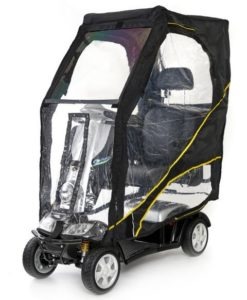 maller pavement scooters but also the larger road-going scooters too.
maller pavement scooters but also the larger road-going scooters too.
The answer is yes – it is possible to use a mobility scooter with one hand, but it may be more difficult. and it may take some practice and adjustment. Just be sure to always use caution when operating a mobility scooter.
- First, it’s important to practice using the scooter with one hand before taking it out for a drive
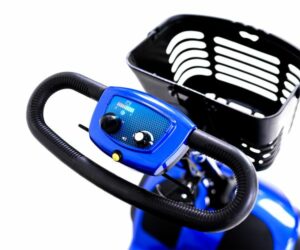 . You can practice manoeuvring the scooter while you get comfortable with the controls.
. You can practice manoeuvring the scooter while you get comfortable with the controls. - Additionally, it’s a good idea to find a mobility scooter specifically designed for one-handed use. By doing this, the scooter will be easier to operate with one hand.
It is standard to have the forward control paddle on Mobility Scooters on the right-hand side and the reverse control paddle on the left. However, this can usually be reversed if you are left-handed or have restricted use of either hand.
The ‘tiller’ is basically the front part of the scooter which includes the handlebars and the controls to start and drive the scooter. On most scooters the tiller angle is adjustable which allows you to bring the controls closer to you.
Larger, mo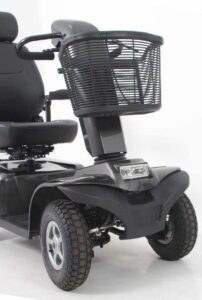 re expensive scooters have a gas strut making it very easy to alter the tiller.
re expensive scooters have a gas strut making it very easy to alter the tiller.
All mobility scooters are battery powered vehicles using two 12-volt rechargeable batteries. The size of the batteries is directly proportional to the range and weight limit of the scooter.
The differing power output from a battery is measured in Ampere hours (Ah) and, generally, the larger and heavier the batteries, the greater the output capacity. Small portable scooters will typically have two 12Ah batteries whilst Luxury Class 3 scooters may have batteries as large as 74Ah. High-capacity batteries are larger, heavier and more expensive.
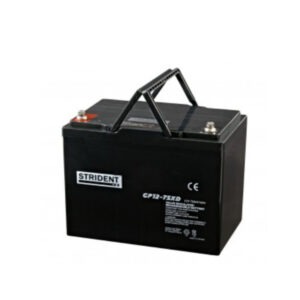
While scooter batteries may appear difficult to install, they are in fact simple. In most cases the wires are colour coded and are attached using a simple nut a bolt.
Many medium size and large mobility scooters and power chairs already have lights fitted but many smaller portable products don’t have lights fitted as standard so you might need to think about fixing some additional lights.
Mobility scooters on the road must be able to travel at 8mph (12kph) and be equipped with headlights, rear lights, flashing indicators, and a horn.
At night, lights MUST be used. Be aware that other road users may not see you and you should make yourself more visible – even in the daytime and also at dusk – by, for instance, wearing a reflective jacket or reflective strips on the back of the vehicle. Take extra care at road junctions.
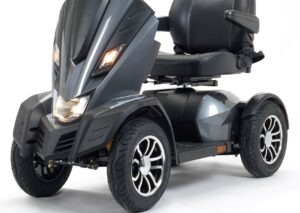
Seating
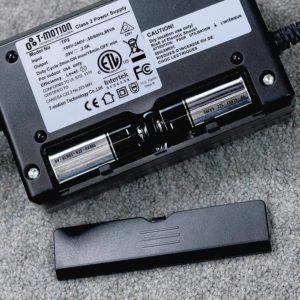 Certain ranges of the electric models are supplied with a battery back-up in the rear of the transformer. This battery is for emergency use only and will cut in if there is a power failure (it will need replacing after this). The battery will have a lifespan of approximately 6 months in standby mode and therefore must be changed regularly.
Certain ranges of the electric models are supplied with a battery back-up in the rear of the transformer. This battery is for emergency use only and will cut in if there is a power failure (it will need replacing after this). The battery will have a lifespan of approximately 6 months in standby mode and therefore must be changed regularly.
The purpose of a battery backup is to ensure that in the event of a power cut you are still able to operate the chair- this is important if you are fully reclined at the time of the power cut as it may be impossible for you to get out of the chair. Most chairs come with a battery backup as standard or it is offered as an optional extra.
Important: The battery backup is a safety feature to return the chair to a sitting position in the event of a power cut. It will only operate a limited number of times, after which the battery will need to be changed.
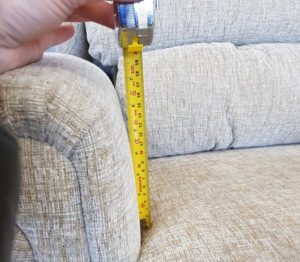 The answer is yes. We offer a free onsite assessment. The key measurements are seat height, seat width and seat depth. The dimensions are crucial in terms of giving you the best comfort, support and pressure distribution in your chair.
The answer is yes. We offer a free onsite assessment. The key measurements are seat height, seat width and seat depth. The dimensions are crucial in terms of giving you the best comfort, support and pressure distribution in your chair.
The correct seat height can be calculated by measuring the distance from the floor to the crease at the back of your knees. When seated your feet should be flat on the floor and your hips and knees should be at right angles.
The seat should be wide enough to allow you to sit comfortably while resting, knitting or reading, but narrow enough to enable to you use the armrests.
The seat depth is calculated by measuring the distance from the back of the hips along the thighs to approximately 1.5” before the back of the knees. The seat must be deep enough to support the full length of the thighs but not so deep that it can’t support your lower back correctly.
Our experienced team will be happy to assist you in finding the correct seating position for you.
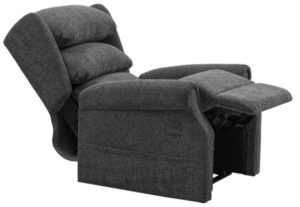 Tilt in space (TIS) is a particular type of motion a chair has when it is reclined. A tilt in space motion angles the seat of the chair backwards with the backrest in a fixed angle and reduces the amount of strain placed on the lower back. The motion maintains the support on your back by keeping the chair in an L shape as you recline. When the chair reclines on normal chairs it can put strain on the lower back as the seat stays horizontal. This action is perfect if you are required to elevate your legs above your heart or just to relax and get your legs up whilst resting or watching TV.
Tilt in space (TIS) is a particular type of motion a chair has when it is reclined. A tilt in space motion angles the seat of the chair backwards with the backrest in a fixed angle and reduces the amount of strain placed on the lower back. The motion maintains the support on your back by keeping the chair in an L shape as you recline. When the chair reclines on normal chairs it can put strain on the lower back as the seat stays horizontal. This action is perfect if you are required to elevate your legs above your heart or just to relax and get your legs up whilst resting or watching TV.
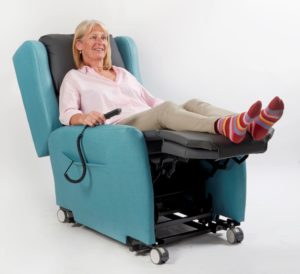 Single motor chairs have just one single motor. The impact of only having one motor is that when the chair reclines, the backrest and the footplate move together or in a coordinated action. On most single motor chairs as the footplate rises the seat in a fixed hip angle will recline back. Single motor chairs do not fully recline but tilt backwards ensuring a good posture is maintained throughout the tilting function. This action is ideal if you are looking to relax in the chair but to elevate the legs above your heart.
Single motor chairs have just one single motor. The impact of only having one motor is that when the chair reclines, the backrest and the footplate move together or in a coordinated action. On most single motor chairs as the footplate rises the seat in a fixed hip angle will recline back. Single motor chairs do not fully recline but tilt backwards ensuring a good posture is maintained throughout the tilting function. This action is ideal if you are looking to relax in the chair but to elevate the legs above your heart.
A dual motor chair has two motors, one motor to control the footrest and one motor to control the back rest. This gives the ultimate flexibility and allows you to find a reclined seating position to suit you. A dual motor chair will allow you to fully recline, so is ideal if you may need to sleep in your chair on occasions.
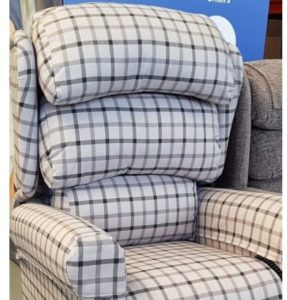 We have a wide variety of colours and fabrics- including leather for you to choose from. Many of our chairs are available with stylish and customisable fabrics, you will find something to complement any room. With waterproof fabrics, easy to clean materials, 2-way stretch materials the list goes on and on but rest assured we have the fabric that will work for you.
We have a wide variety of colours and fabrics- including leather for you to choose from. Many of our chairs are available with stylish and customisable fabrics, you will find something to complement any room. With waterproof fabrics, easy to clean materials, 2-way stretch materials the list goes on and on but rest assured we have the fabric that will work for you.
You certainly don’t have to have a stock fabric. You have the ability to choose the type of fabric and the colour of your choice which means you can have the chair to match any décor in your property.
Walking Aids
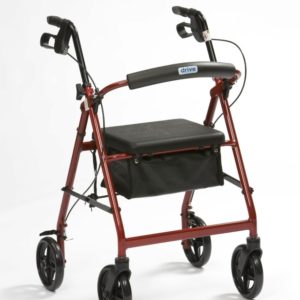 Not all Rollators have a seat – but the good news is there are plenty that do. Most of the four-wheel rollators and some of the tri wheel rollators incorporate seats – this enables you to take short rests during your journey.
Not all Rollators have a seat – but the good news is there are plenty that do. Most of the four-wheel rollators and some of the tri wheel rollators incorporate seats – this enables you to take short rests during your journey.
The seat is located in the space between the handle bars and are usually hinged and have a small storage space underneath. The seat forms a lid for the bag or basket.
The locking brakes ensures that you can secure the rollator before turning to sit on it which is an excellent safety feature.
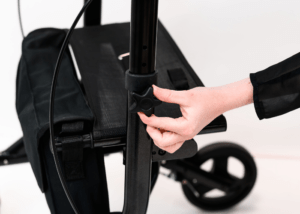 Most rollators are height adjustable by moving the handlebars up and down. This provides a range of hand heights for you to choose from.
Most rollators are height adjustable by moving the handlebars up and down. This provides a range of hand heights for you to choose from.
The seat height is normally fixed for most types of standard four wheeled Rollators.
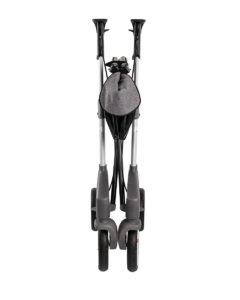 There are many Rollators with an easy to fold frame. Many 4 wheeled and 3 wheeled Rollators will fold easily for storage and transportation.
There are many Rollators with an easy to fold frame. Many 4 wheeled and 3 wheeled Rollators will fold easily for storage and transportation.
Some rollators fold side to side, others fold front to back. If you are looking for a rollator that takes up minimal space when folded then the ones that fold side to side will be the best option for you.
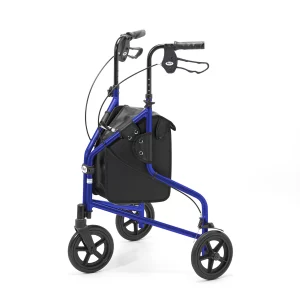 Virtually all 3 wheeled rollators can be folded for transport and storage. The folding mechanism differs on each model, but it is normally operated by releasing a locking mechanism nearer the front of the frame, this allows the handle bars and the rear wheels to be closed together – this significantly reduces the width of the frame making it easier to put in the boot of the car or on the bus etc.
Virtually all 3 wheeled rollators can be folded for transport and storage. The folding mechanism differs on each model, but it is normally operated by releasing a locking mechanism nearer the front of the frame, this allows the handle bars and the rear wheels to be closed together – this significantly reduces the width of the frame making it easier to put in the boot of the car or on the bus etc.
Three Wheeled rollators are more manoeuvrable than a four wheeled rollator.
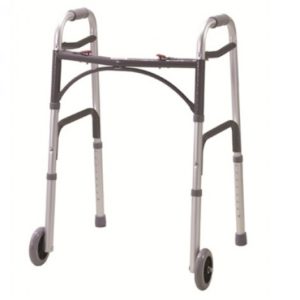 Not all walking frames will fold. The frame pictured is a lightweight aluminium height adjustable frame which is easily folded for storage and transportation. You will find this on our website.
Not all walking frames will fold. The frame pictured is a lightweight aluminium height adjustable frame which is easily folded for storage and transportation. You will find this on our website.
 The good news is that most rollators come with a bag or basket already attached. Some frames are designed with special attachments so that a larger detachable shopping bag can be carried easily.
The good news is that most rollators come with a bag or basket already attached. Some frames are designed with special attachments so that a larger detachable shopping bag can be carried easily.
All of the rollators on our website have a bag or basket already attached. This means that if the rollator is foldable then the bag is designed to fold with it.
Yes, there are several rollators that have both a seat and a bag. Often the bag/basket is under the seat, but this isn’t always the case.
The rollator pictured has both a seat and a bag separately – this can be found on our website with several others to chose from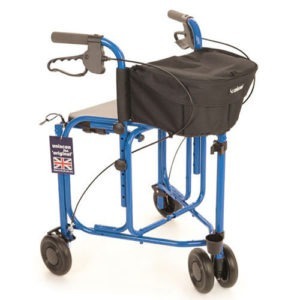
Wheelchairs
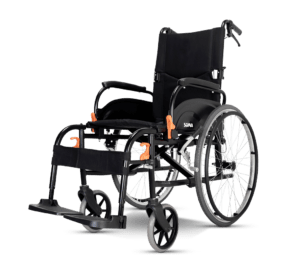 A self-propelled wheelchair is designed with larger wheels at the back of the chair. There is push-rims which allow the occupant to easily manoeuvre themselves along using their upper body strength. Self-propelled wheelchairs are primarily designed to allow the occupant to propel themselves along with-out the need of someone pushing the chair.
A self-propelled wheelchair is designed with larger wheels at the back of the chair. There is push-rims which allow the occupant to easily manoeuvre themselves along using their upper body strength. Self-propelled wheelchairs are primarily designed to allow the occupant to propel themselves along with-out the need of someone pushing the chair.
When needed, the wheelchair can be pushed by someone, as these chairs normally have pushing handles on the back as well. The larger wheels on the back can also be an advantage when overcoming kerbs or other obstacles.
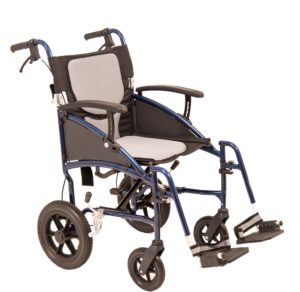 An attendant propelled wheelchair is sometimes known as a transit wheelchair. If you intend to rely on someone pushing you in your chair, or if you are not strong enough to propel yourself, you would need to purchase an attendant propelled or transit wheelchair.
An attendant propelled wheelchair is sometimes known as a transit wheelchair. If you intend to rely on someone pushing you in your chair, or if you are not strong enough to propel yourself, you would need to purchase an attendant propelled or transit wheelchair.
They have smaller rear wheels and can be easier to manoeuvre for the person pushing. The occupant has no ability to manoeuvre themselves, as the wheels are too small to reach let alone use to propel oneself.
 The arms on a wheelchair are essential for support whilst seated. Many wheelchairs have detachable armrests which can be removed to allow sideways transfers. An alternative to detachable arms is to have swing up arms which pivot at the back. Some chairs have armrests which swing up and are detachable.
The arms on a wheelchair are essential for support whilst seated. Many wheelchairs have detachable armrests which can be removed to allow sideways transfers. An alternative to detachable arms is to have swing up arms which pivot at the back. Some chairs have armrests which swing up and are detachable.
Some of the more sophisticated wheelchairs incorporate height adjustable armrests. This is particularly useful when you need to use a pressure cushion in the wheelchair which may change your seating position.
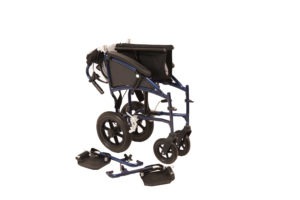 The answer is yes you can remove the footplates on most wheelchairs. Being able to remove the footplates altogether is important for transporting the wheelchair as it reduces the overall size of the frame.
The answer is yes you can remove the footplates on most wheelchairs. Being able to remove the footplates altogether is important for transporting the wheelchair as it reduces the overall size of the frame.
The majority of footrests swing outwards or sometimes outward and inwards, having swing away footplates is important for safe transfers, it allows you to stand in front of the chair without having to step over the footplates.
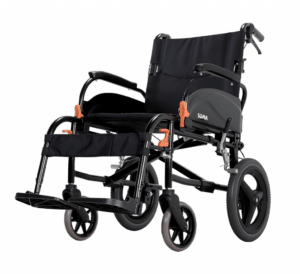 All wheelchairs have a maximum user weight. If you exceed this weight it can lead to the wheelchair becoming unsafe and will invalidate any warranty on the chair.
All wheelchairs have a maximum user weight. If you exceed this weight it can lead to the wheelchair becoming unsafe and will invalidate any warranty on the chair.
The normal weight limit for most standard chairs is around 18 stone, (114kg) but there are several heavy-duty wheelchairs available if you weigh in excess of that weight.
The wheelchair pictured has a max user weight of just over 19 stone. (125kg)
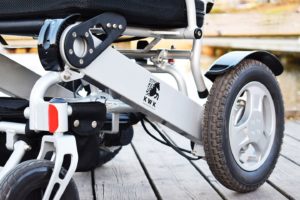 The rear wheels on a wheelchair will either be pneumatic tyres and solid rubber. The pneumatic tyres offer better shock absorption than the solid tyres but they can puncture. Solid tyres have the advantage of being puncture proof, but they do give a slightly harder ride.
The rear wheels on a wheelchair will either be pneumatic tyres and solid rubber. The pneumatic tyres offer better shock absorption than the solid tyres but they can puncture. Solid tyres have the advantage of being puncture proof, but they do give a slightly harder ride.
Nearly all of the wheelchairs that we supply now come with solid tyres for peace of mind.
We do offer a repair service which includes puncture repairs on all wheelchairs.
 Most standard manual wheelchairs have fixed backrest heights and usually have a small degree of recline of 5 degrees, but this can vary from chair to chair so it is worth comparing different models.
Most standard manual wheelchairs have fixed backrest heights and usually have a small degree of recline of 5 degrees, but this can vary from chair to chair so it is worth comparing different models.
If you are after more of a recline or an adjustable angle back rest – these are available on more specialist chairs which will cost considerably more.
The basic purpose of a wheelchair cushion is to provide additional comfort to the users when seated. Most wheelchairs are designed for you to use your own cu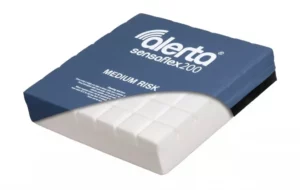 shion and it is recommended that you buy a cushion when purchasing a new wheelchair even if it is just a basic foam one.
shion and it is recommended that you buy a cushion when purchasing a new wheelchair even if it is just a basic foam one.
The more advanced pressure care cushions are designed to prevent pressure sores, these can develop if you spend long periods of time seated in the chair.
